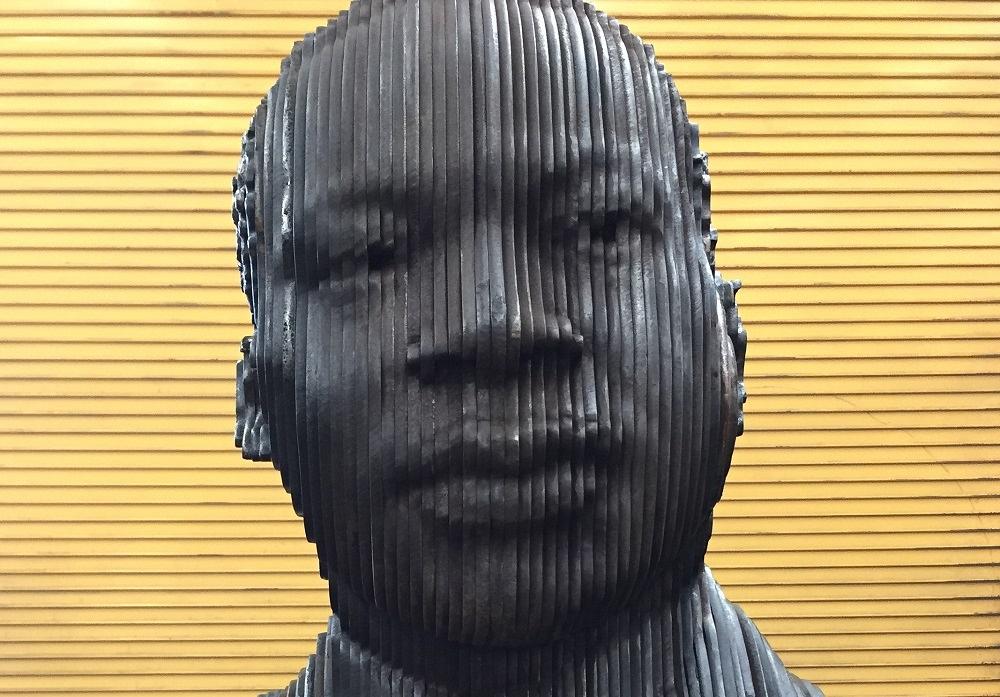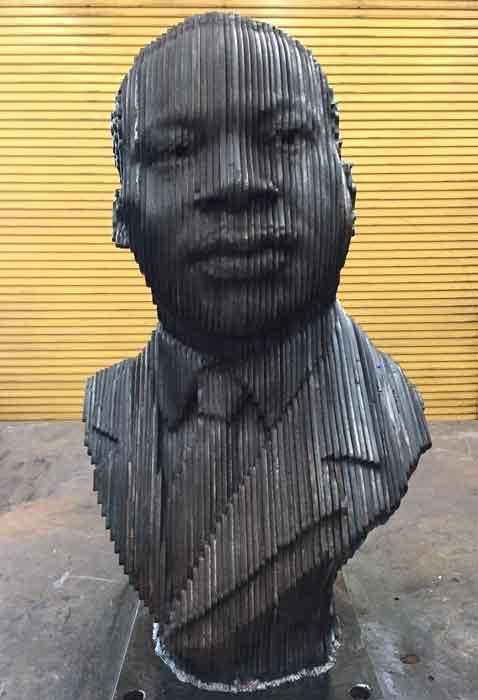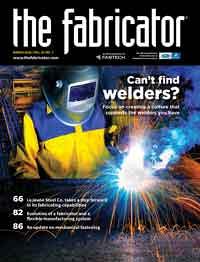- FMA
- The Fabricator
- FABTECH
- Canadian Metalworking
Categories
- Additive Manufacturing
- Aluminum Welding
- Arc Welding
- Assembly and Joining
- Automation and Robotics
- Bending and Forming
- Consumables
- Cutting and Weld Prep
- Electric Vehicles
- En Español
- Finishing
- Hydroforming
- Laser Cutting
- Laser Welding
- Machining
- Manufacturing Software
- Materials Handling
- Metals/Materials
- Oxyfuel Cutting
- Plasma Cutting
- Power Tools
- Punching and Other Holemaking
- Roll Forming
- Safety
- Sawing
- Shearing
- Shop Management
- Testing and Measuring
- Tube and Pipe Fabrication
- Tube and Pipe Production
- Waterjet Cutting
Industry Directory
Webcasts
Podcasts
FAB 40
Advertise
Subscribe
Account Login
Search
San Diego welding students fabricate MLK sculptures
Metal sculptures were used on floats for annual Martin Luther King Jr. parade
- By Sue Roberts
- March 8, 2020
- Article
- Shop Management

Welding students in San Diego work on floats for the city’s annual Martin Luther King Jr. parade. Photos provided
An evening class offered by San Diego Continuing Education (SDCE), the adult education division of the San Diego Community College District (SDCCD), draws adults interested in changing careers and learning or expanding their welding skills. The principles, practices, and practical applications of gas metal and flux-core and gas tungsten arc welding, pipe welding, and basic metal fabrication prepare students for jobs that include nearly endless opportunities in job shops and local shipyards.
Although the state-funded, free welding classes provide focused, vocational training, Mike Bradbury, SDCE faculty member, expands learning opportunities for students who have an artistic tendency and a little extra time. For the past nine years, they have had the option to boost hands-on experience by working on SDCE’s float entries for the city’s annual Martin Luther King Jr. (MLK) parade.
Each year Bradbury and his aides develop a design concept that reflects the parade’s theme—Let Freedom Ring. A representation of the Liberty Bell has to appear somewhere on the float, but does not need to be the main focus, which for the SDCE entries have often been sculptures of MLK. Welding class volunteers turn the concepts into realities.
Float designs have included replicas of the Liberty Bell; the Rosa Parks bus; Selma, Ala.’s Edmund Pettus Bridge; a larger-than-life statue of MLK constructed using letters that spell out excerpts from his “I Have a Dream” speech; and a commissioned bust of MLK. So far each entry has received at least one of the parade’s top awards, garnering trophies for Best Overall Float and Best Educational Offering.
Expanding Learning
“Each year I pitch the float concept to a new group of students. My assistants and I design the platform and provide prints or a punch list for students to work from. They have to follow the plan, work together, meet a budget and timeline—all things they will need to do in jobs in the real world,” Bradbury said.
“A lot of class members start out welding with no idea that they can create art with metal, but as they get into the project, they begin to understand and start offering suggestions. I see the light coming on in their eyes, and I know the possibilities of welding are getting to the heart of what makes them tick.
“Some students have natural artistic talents and gravitate toward the float projects. I tell them that a cool part of the float projects is that they will be a part of history.”
A recording of past parades and their floats is part of the city’s website, and several of the past float sculptures are displayed on SDCE campuses.
In February 2019 San Diego commissioned a bust of MLK from SDCE’s welding program. It now resides on Dr. Martin Luther King Jr. Way between Charlene Avenue to the north and Tiffin Avenue at the south end of King Way. A plaque featuring the names of the students who worked on the sculpture is part of the permanent display. The sculpture itself made its first public appearance as part of an SDCE MLK parade float.
Industry Partnerships
Material for the floats and the welding classes donated by local businesses is often considered scrap.

A CNC plasma cutter produced the letters to build the award-winning “Letter Man” sculpture. The alphabetical elements were welded together so excerpts from Martin Luther King Jr.’s “I Have a Dream” speech could be read.
“Relying on donations is one of the ways we can continue to have materials for students to practice on and to use to build the floats. Businesses donate materials otherwise headed for recycling. We send trucks to gather tons of plates of steel and some shipyards drop off containers of scrap for the students to cut up and weld. Material not used for sculptures gains weight from the welding rods added during class and then goes on to recycling,” Bradbury said.
Other float necessities also are donated or were once considered scrap.
“Some float components, like the motor used to animate a section of the designs, have been found by dumpster diving. That motor has worked for the last five years,” Bradbury added.
Despite fairly humble beginnings, the Let Freedom Ring float sculptures will continue to be part of San Diego’s and SDCE’s history. They will be permanently displayed as part of the campus’s Educational Cultural Complex walking museum. Visitors will be directed to links where they can learn the background of each piece of art.
In the meantime Bradbury will develop concepts for future MLK parade floats every April, his students will begin turning scrap into art every November, and San Diego’s MLK parade will feature a new SDCE Let Freedom Ring float built by students learning the art of welding every January.
About the Author

subscribe now

The Fabricator is North America's leading magazine for the metal forming and fabricating industry. The magazine delivers the news, technical articles, and case histories that enable fabricators to do their jobs more efficiently. The Fabricator has served the industry since 1970.
start your free subscription- Stay connected from anywhere

Easily access valuable industry resources now with full access to the digital edition of The Fabricator.

Easily access valuable industry resources now with full access to the digital edition of The Welder.

Easily access valuable industry resources now with full access to the digital edition of The Tube and Pipe Journal.
- Podcasting
- Podcast:
- The Fabricator Podcast
- Published:
- 04/16/2024
- Running Time:
- 63:29
In this episode of The Fabricator Podcast, Caleb Chamberlain, co-founder and CEO of OSH Cut, discusses his company’s...
- Trending Articles
Tips for creating sheet metal tubes with perforations

Are two heads better than one in fiber laser cutting?

Supporting the metal fabricating industry through FMA

JM Steel triples capacity for solar energy projects at Pennsylvania facility

Omco Solar opens second Alabama manufacturing facility

- Industry Events
16th Annual Safety Conference
- April 30 - May 1, 2024
- Elgin,
Pipe and Tube Conference
- May 21 - 22, 2024
- Omaha, NE
World-Class Roll Forming Workshop
- June 5 - 6, 2024
- Louisville, KY
Advanced Laser Application Workshop
- June 25 - 27, 2024
- Novi, MI



























